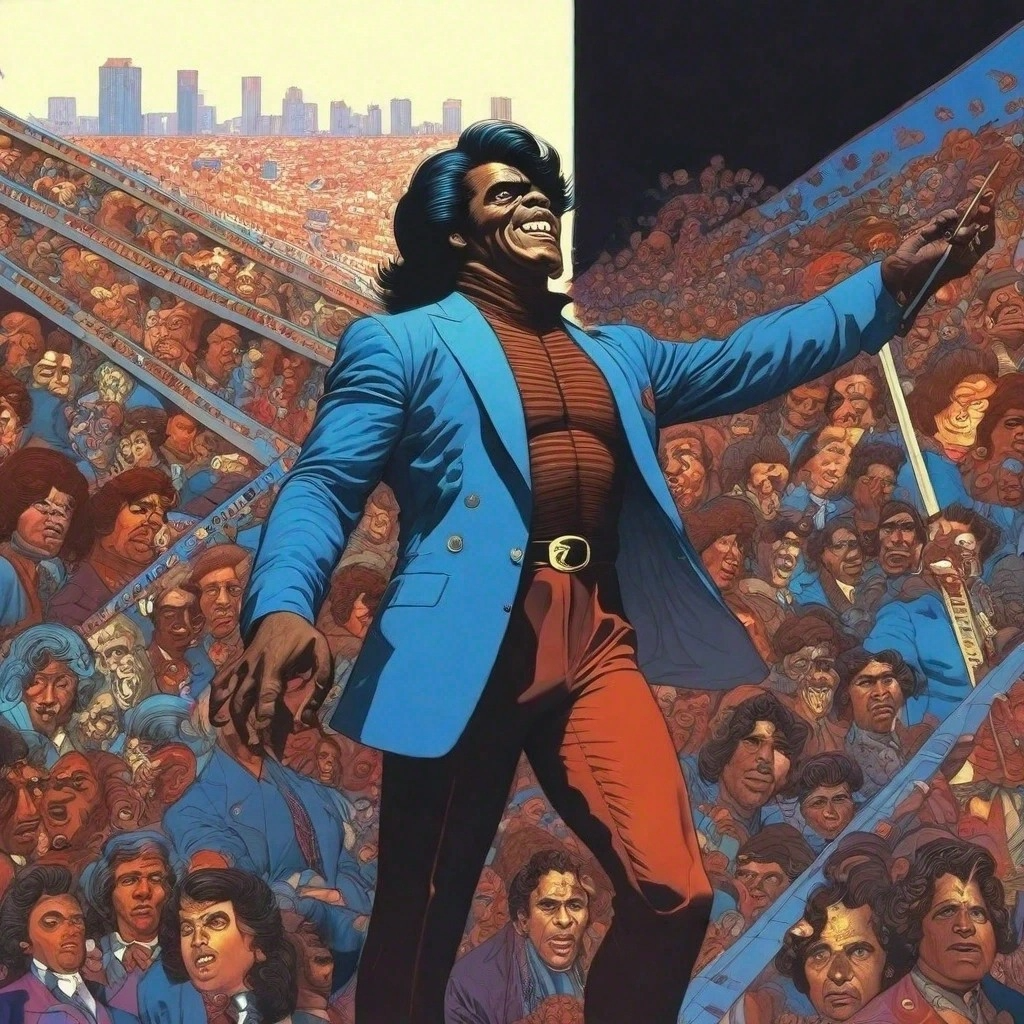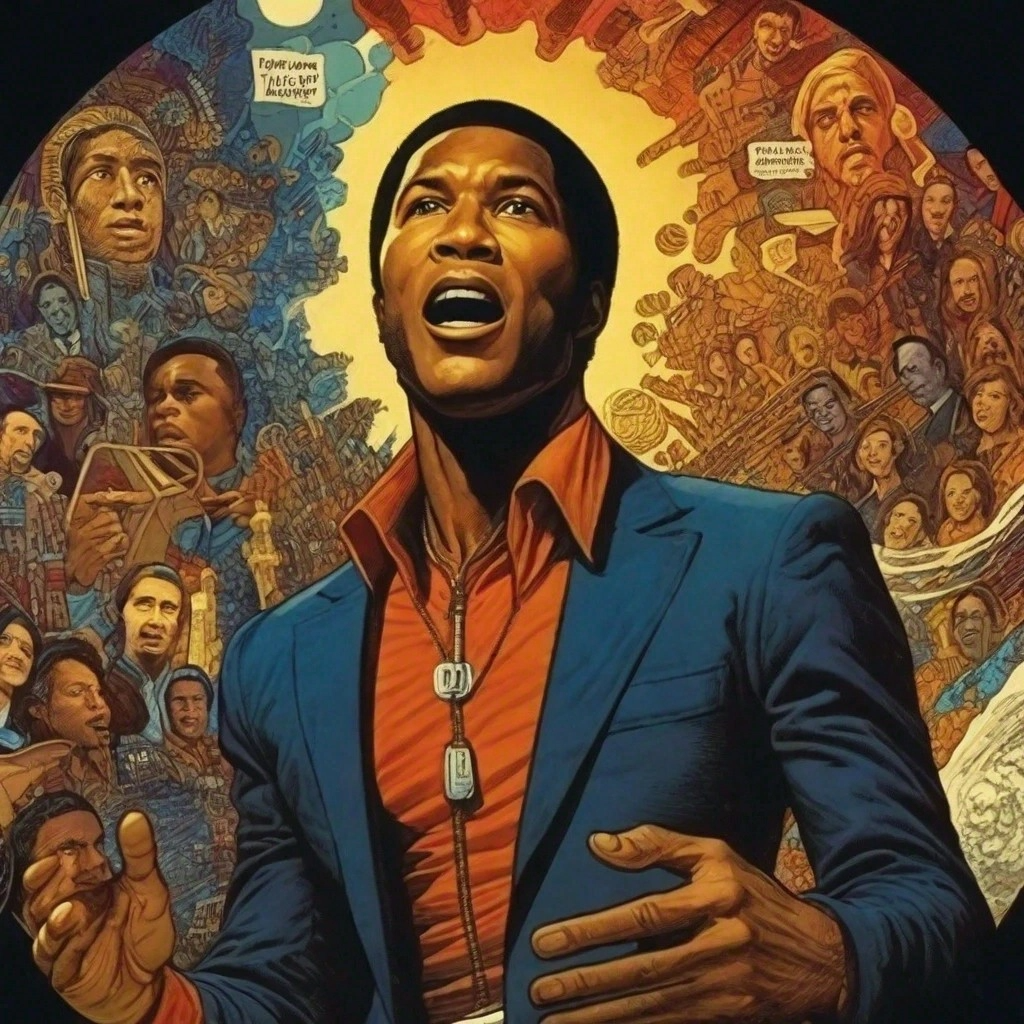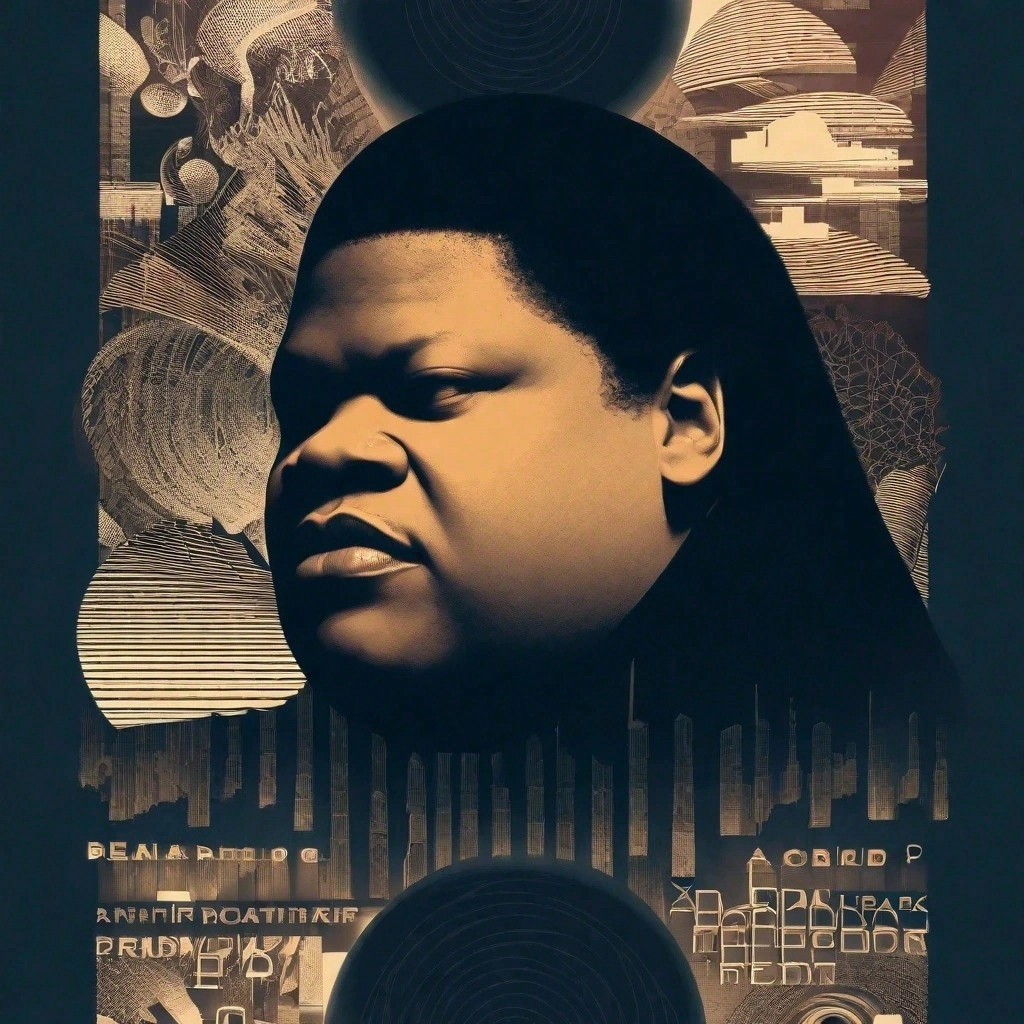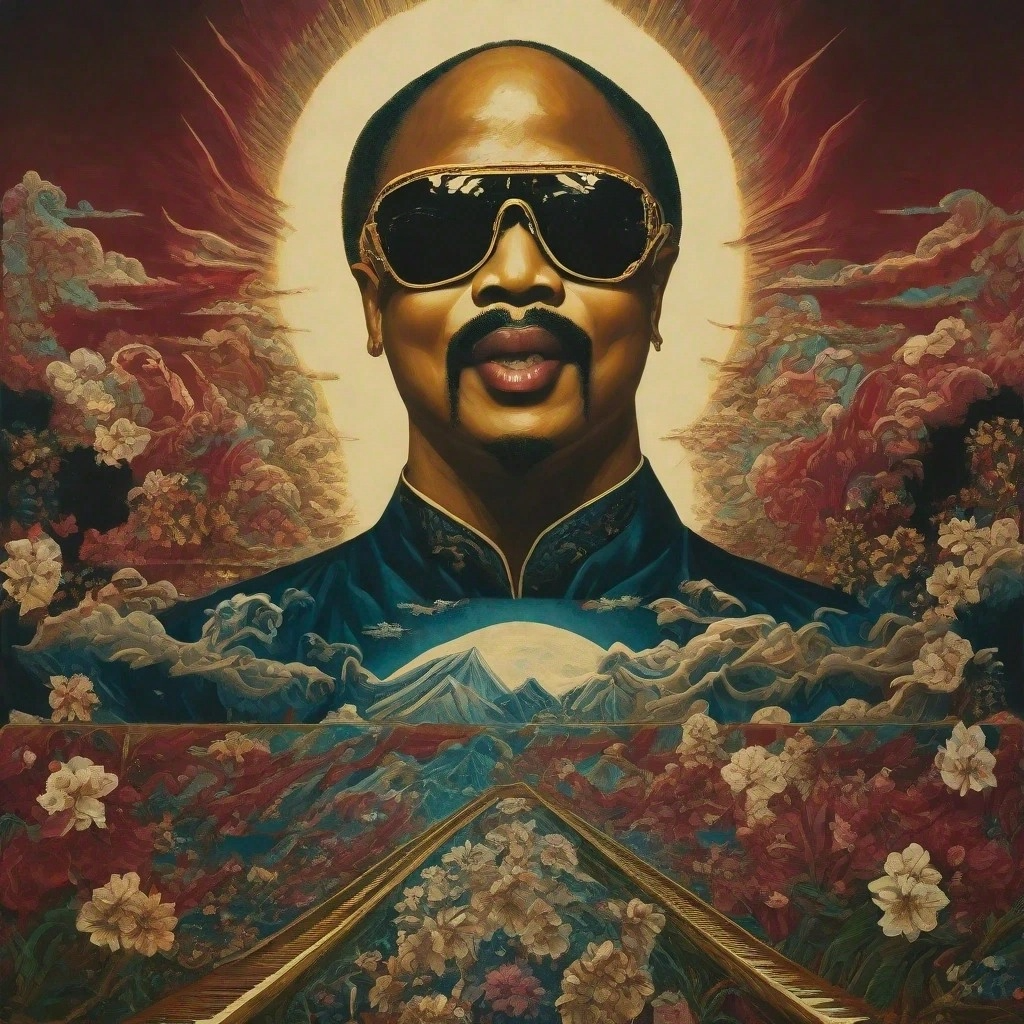Introduction
James Brown, often hailed as the “Godfather of Soul” and “The Hardest Working Man in Show Business,” was a legendary American musician, singer, songwriter, and dancer whose impact on music and culture reverberates to this day. Born on May 3, 1933, in Barnwell, South Carolina, Brown’s journey from a challenging childhood to international fame is a testament to his unparalleled talent, resilience, and relentless pursuit of excellence.
From his electrifying stage presence to his innovative musical style, James Brown transcended genres and boundaries, leaving an indelible mark on the world of music. Throughout his career, he not only entertained audiences but also challenged societal norms, advocated for civil rights, and inspired generations of artists across various genres.
In this article, we delve into the life and legacy of James Brown, exploring his early years, artistic evolution, career milestones, and enduring impact on music and society. Join us on a journey through the life of a true icon whose influence continues to resonate across the globe.
Early Years and Influences
James Brown’s early years were marked by hardship and adversity, yet they laid the foundation for his remarkable journey to musical stardom. Born into poverty in Barnwell, South Carolina, on May 3, 1933, Brown’s childhood was characterized by instability and struggle. At a young age, he experienced the loss of his parents and was raised primarily by his aunt in poverty-stricken conditions.
Despite the challenges he faced, Brown discovered a passion for music early on. Inspired by the gospel music he heard in church and the rhythm and blues tunes playing on the radio, he began singing in local talent shows and church choirs. It was during these formative years that Brown honed his vocal skills and developed a deep appreciation for the power of music to uplift and inspire.
Brown’s musical influences were diverse and eclectic, reflecting the rich tapestry of African American music that surrounded him. He drew inspiration from the soulful sounds of artists like Ray Charles, Little Richard, and Louis Jordan, as well as the gospel music of Mahalia Jackson and The Soul Stirrers. These early influences would shape Brown’s musical style and pave the way for his groundbreaking contributions to the world of rhythm and blues, soul, funk, and beyond.
As a teenager, Brown’s passion for music only intensified, and he immersed himself in the vibrant music scene of Augusta, Georgia, where he relocated with his family. It was there that he formed his first vocal group, The Famous Flames, and began performing in local clubs and venues. This period marked the beginning of Brown’s professional music career and set the stage for his ascent to fame.
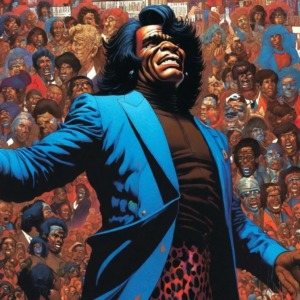 In addition to his musical influences, Brown’s early years were also shaped by the social and cultural landscape of the time. Growing up in the segregated South, he witnessed firsthand the injustices and inequalities faced by African Americans, experiences that would later fuel his activism and influence his music.
In addition to his musical influences, Brown’s early years were also shaped by the social and cultural landscape of the time. Growing up in the segregated South, he witnessed firsthand the injustices and inequalities faced by African Americans, experiences that would later fuel his activism and influence his music.
Overall, James Brown’s early years were marked by a deep connection to music, a resilience forged in the face of adversity, and a determination to succeed against all odds. These formative experiences would lay the groundwork for his groundbreaking contributions to music and culture, establishing him as one of the most influential figures in the history of popular music.
Artistic Evolution and Musical Identity
James Brown’s artistic evolution and musical identity are a testament to his relentless innovation, boundless creativity, and unwavering commitment to pushing the boundaries of popular music. Throughout his illustrious career, Brown continually reinvented himself, drawing inspiration from a wide range of musical genres and styles while staying true to his distinctive sound and vision.
At the heart of Brown’s artistic evolution was his pioneering exploration of rhythm and groove. Drawing on his roots in gospel, rhythm and blues, and jazz, Brown developed a rhythmic approach to music that was revolutionary in its complexity and intensity. His signature sound, characterized by tight, syncopated rhythms, driving percussion, and infectious grooves, became the foundation of funk music and exerted a profound influence on generations of musicians.
One of Brown’s most significant contributions to music was his development of the “James Brown sound,” a unique blend of soul, funk, and rhythm and blues that captivated audiences around the world. Central to this sound was Brown’s dynamic vocal delivery, characterized by his trademark screams, shouts, and impassioned ad-libs. Whether crooning a heartfelt ballad or unleashing a frenetic funk groove, Brown’s vocal prowess was unmatched, earning him widespread acclaim as one of the greatest singers of his generation.
In addition to his vocal talents, Brown was also a virtuosic instrumentalist and bandleader, known for his tight arrangements, intricate horn lines, and explosive live performances. His backing band, The J.B.’s, was renowned for its precision and groove, providing the perfect backdrop for Brown’s electrifying stage presence and dynamic showmanship.
As his career progressed, Brown continued to evolve musically, incorporating elements of rock, jazz, and even disco into his sound. Albums like “Live at the Apollo” and “Sex Machine” showcased Brown’s versatility as an artist, blending raw energy with sophisticated musical arrangements to create timeless classics that transcended genre boundaries.
Beyond his musical innovations, Brown’s artistic evolution was also shaped by his role as a cultural icon and activist. Through songs like “Say It Loud – I’m Black and I’m Proud” and “I Don’t Want Nobody to Give Me Nothing (Open Up the Door, I’ll Get It Myself),” Brown used his platform to advocate for civil rights and social justice, cementing his legacy as a trailblazer both on and off the stage.
In summary, James Brown’s artistic evolution and musical identity were defined by his boundless creativity, innovative spirit, and unwavering commitment to pushing the boundaries of popular music. From his pioneering exploration of rhythm and groove to his role as a cultural icon and activist, Brown’s influence on music and culture remains as powerful and enduring as ever, ensuring his place as one of the true legends of the music industry.
Career Milestones and Achievements
James Brown’s career was marked by a series of groundbreaking milestones and unparalleled achievements that solidified his status as one of the most influential figures in the history of popular music. From his early days as a struggling musician to his rise to international fame, Brown’s journey was characterized by relentless ambition, unparalleled talent, and a tireless work ethic.
One of the defining moments of Brown’s career came in 1956 when he released his breakthrough single, “Please, Please, Please,” with his group The Famous Flames. The song’s raw energy and impassioned vocals caught the attention of audiences and industry insiders alike, propelling Brown to newfound fame and setting the stage for his ascent to superstardom.
Throughout the 1960s, Brown continued to dominate the charts with a string of hits that showcased his dynamic vocal delivery and innovative approach to rhythm and groove. Songs like “Try Me,” “I Got You (I Feel Good),” and “Papa’s Got a Brand New Bag” became instant classics, earning Brown widespread acclaim and establishing him as a leading figure in the world of soul and rhythm and blues.
In 1963, Brown recorded his legendary live album, “Live at the Apollo,” which captured the raw energy and electrifying stage presence that made him one of the most captivating performers of his generation. The album’s success not only solidified Brown’s reputation as a powerhouse live performer but also helped to break down racial barriers in the music industry, paving the way for future generations of African American artists.
As his career progressed, Brown continued to push the boundaries of popular music, incorporating elements of funk, rock, and jazz into his sound. Albums like “Cold Sweat” and “Sex Machine” showcased Brown’s innovative approach to music, blending infectious grooves with socially conscious lyrics to create a sound that was both groundbreaking and commercially successful.
In addition to his musical achievements, Brown was also a trailblazer in the world of entertainment, breaking down barriers as one of the first African American artists to achieve crossover success in mainstream media. His electrifying performances on stage and screen captivated audiences around the world, earning him accolades and awards for his contributions to music and culture.
Throughout his career, James Brown amassed a staggering array of accolades and achievements, including multiple Grammy Awards, induction into the Rock and Roll Hall of Fame, and recognition as one of the greatest artists of all time by publications like Rolling Stone and Billboard. More than just a musician, Brown’s impact on popular culture and society at large is immeasurable, ensuring his enduring legacy as one of the true legends of the music industry.
Social and Cultural Impact
James Brown’s influence extended far beyond the realm of music, leaving an indelible mark on society and culture that resonates to this day. As one of the most prominent African American artists of his time, Brown used his platform to challenge racial stereotypes, advocate for civil rights, and promote social change, leaving a lasting legacy that transcends his musical achievements.
Central to Brown’s social and cultural impact was his role as a symbol of black pride and empowerment. At a time when racial tensions ran high in America, Brown’s music served as a rallying cry for African Americans seeking equality and justice. Songs like “Say It Loud – I’m Black and I’m Proud” and “I Don’t Want Nobody to Give Me Nothing (Open Up the Door, I’ll Get It Myself)” became anthems of the civil rights movement, inspiring millions to stand up and fight for their rights.
In addition to his music, Brown was also a vocal advocate for social change, using his celebrity status to raise awareness of issues affecting the African American community. He participated in numerous civil rights rallies and events, lending his voice and influence to causes such as voter registration drives, anti-discrimination campaigns, and efforts to combat poverty and inequality.
Beyond his activism, Brown’s impact on culture was also felt through his pioneering contributions to the world of dance and fashion. His electrifying dance moves, including the iconic “James Brown Shuffle” and “The Good Foot,” revolutionized the art of performance, inspiring generations of dancers and choreographers. Likewise, Brown’s flamboyant style and bold fashion choices made him a trendsetter in the world of entertainment, influencing fashion trends and popular culture for decades to come.
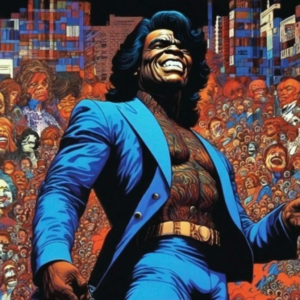 Moreover, Brown’s influence extended beyond the borders of the United States, resonating with audiences around the world and inspiring countless artists across diverse genres and cultures. From funk and hip-hop to rock and pop, Brown’s music transcended cultural boundaries, uniting listeners from all walks of life in a shared appreciation for his unparalleled talent and infectious grooves.
Moreover, Brown’s influence extended beyond the borders of the United States, resonating with audiences around the world and inspiring countless artists across diverse genres and cultures. From funk and hip-hop to rock and pop, Brown’s music transcended cultural boundaries, uniting listeners from all walks of life in a shared appreciation for his unparalleled talent and infectious grooves.
In summary, James Brown’s social and cultural impact was profound and far-reaching, transcending the boundaries of music to leave an indelible mark on society and culture. Through his music, activism, and pioneering spirit, Brown challenged conventions, broke down barriers, and inspired generations to stand up for what they believe in. His legacy as a cultural icon and trailblazer continues to inspire and resonate with audiences around the world, ensuring that the impact of the “Godfather of Soul” will be felt for generations to come.
Personal Life: Behind the Scenes
Behind James Brown’s larger-than-life persona and electrifying stage presence lay a complex and often tumultuous personal life marked by triumphs, struggles, and contradictions. While Brown’s professional achievements were celebrated worldwide, his personal life was characterized by a series of highs and lows that shaped the man behind the music.
Born into poverty in rural South Carolina, Brown’s early years were marked by adversity and hardship. Raised primarily by his aunt in a brothel, Brown endured a challenging childhood marked by poverty, violence, and instability. Despite the obstacles he faced, Brown found solace and inspiration in music, using his talent and determination to overcome adversity and pursue his dreams of stardom.
As Brown’s career took off, so too did his personal life become increasingly complex. He married multiple times and fathered numerous children, but his relationships were often fraught with turmoil and controversy. Brown’s tumultuous marriages and high-profile divorces were fodder for the tabloids, providing a stark contrast to his carefully crafted public image as the consummate showman.
Behind closed doors, Brown struggled with personal demons, including drug addiction and legal troubles, which threatened to derail his career and tarnish his legacy. Despite his public persona as a larger-than-life entertainer, Brown grappled with insecurities and vulnerabilities that often went unnoticed by his adoring fans.
Despite the challenges he faced, Brown remained fiercely dedicated to his craft, pouring his heart and soul into every performance and recording. His work ethic was legendary, earning him the nickname “The Hardest Working Man in Show Business” and inspiring admiration and respect from colleagues and fans alike.
In his later years, Brown’s personal life was overshadowed by health problems and legal issues, including a string of arrests and brushes with the law. However, even in the face of adversity, Brown continued to perform and record music, refusing to let his troubles dampen his indomitable spirit.
Ultimately, James Brown’s personal life was as complex and multifaceted as his music, filled with triumphs, struggles, and contradictions. While his professional achievements earned him worldwide acclaim and recognition, his personal struggles humanized him and added depth to his legacy. Despite the challenges he faced, Brown’s enduring influence on music and culture remains unparalleled, ensuring that his legacy will continue to resonate for generations to come.
Discography and Creative Works
James Brown’s discography and creative works represent a monumental contribution to the world of music, spanning decades and encompassing a diverse range of styles and genres. As one of the most prolific and influential artists of the 20th century, Brown’s discography is a testament to his boundless creativity, innovation, and enduring impact on popular culture.
Brown’s discography began in the 1950s with his early recordings as a member of The Famous Flames and later as a solo artist. His early singles, including “Please, Please, Please” and “Try Me,” established Brown as a rising star in the world of rhythm and blues, showcasing his dynamic vocal delivery and raw emotional power.
Throughout the 1960s, Brown’s discography expanded rapidly as he released a string of hit albums and singles that helped define the sound of soul and funk music. Albums like “Live at the Apollo” and “Papa’s Got a Brand New Bag” showcased Brown’s electrifying stage presence and innovative approach to rhythm and groove, while singles like “I Got You (I Feel Good)” and “Cold Sweat” became iconic anthems of the era.
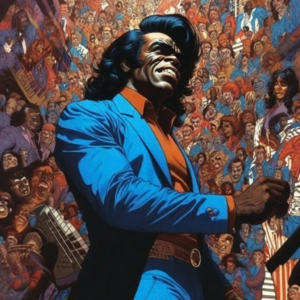 In the 1970s, Brown continued to push the boundaries of popular music with albums like “Sex Machine” and “The Payback,” which further solidified his reputation as the “Godfather of Soul.” During this period, Brown also experimented with new musical styles, incorporating elements of rock, jazz, and disco into his sound, while continuing to deliver electrifying live performances that captivated audiences around the world.
In the 1970s, Brown continued to push the boundaries of popular music with albums like “Sex Machine” and “The Payback,” which further solidified his reputation as the “Godfather of Soul.” During this period, Brown also experimented with new musical styles, incorporating elements of rock, jazz, and disco into his sound, while continuing to deliver electrifying live performances that captivated audiences around the world.
Throughout his career, Brown’s discography was marked by a relentless pursuit of excellence and a commitment to pushing the boundaries of his artistry. From his early recordings with The Famous Flames to his later collaborations with artists like Bootsy Collins and Fred Wesley, Brown’s creative works spanned a wide range of styles and influences, reflecting his eclectic musical tastes and innovative spirit.
In addition to his studio albums and singles, Brown’s discography also includes numerous live recordings, compilations, and collaborations with other artists. His influence on popular music is immeasurable, with countless artists citing him as a primary influence and incorporating elements of his sound into their own music.
Overall, James Brown’s discography and creative works stand as a testament to his enduring legacy as one of the greatest artists of all time. From his soulful ballads to his funky grooves, Brown’s music continues to inspire and influence audiences around the world, ensuring that his contributions to music and culture will be celebrated for generations to come.
Enduring Legacy and Historical Significance
James Brown’s enduring legacy and historical significance transcend the boundaries of music, leaving an indelible mark on popular culture, social movements, and the art of performance. As one of the most influential figures in the history of popular music, Brown’s impact continues to reverberate across generations, shaping the way we listen to, perceive, and engage with music and society.
At the heart of Brown’s enduring legacy is his groundbreaking contributions to the world of rhythm and blues, soul, funk, and beyond. His innovative musical style, characterized by tight, syncopated rhythms, soulful vocals, and dynamic stage presence, revolutionized the art of performance and laid the foundation for entire genres of music. From funk pioneers like Parliament-Funkadelic to hip-hop icons like Public Enemy, Brown’s influence can be heard in the work of countless artists across diverse genres and styles.
Moreover, Brown’s legacy extends beyond his musical achievements to encompass his role as a cultural icon and trailblazer. As one of the first African American artists to achieve crossover success in mainstream media, Brown broke down barriers and paved the way for future generations of African American artists to achieve success on their own terms. His unapologetic embrace of black pride and empowerment resonated with audiences around the world, inspiring millions to stand up and fight for their rights.
In addition to his musical and cultural contributions, Brown’s legacy is also shaped by his activism and advocacy for social change. Throughout his career, he used his platform to speak out against racial injustice, advocate for civil rights, and promote unity and equality. Songs like “Say It Loud – I’m Black and I’m Proud” and “I Don’t Want Nobody to Give Me Nothing (Open Up the Door, I’ll Get It Myself)” became anthems of the civil rights movement, empowering listeners to embrace their identity and demand justice.
Beyond his influence on music and culture, James Brown’s enduring legacy is also reflected in his impact on the art of performance. His electrifying stage presence, dynamic dance moves, and commanding vocal delivery set a new standard for live performance, inspiring generations of artists to push the boundaries of their craft and connect with audiences on a deeper level.
In summary, James Brown’s enduring legacy and historical significance are rooted in his groundbreaking contributions to music, culture, and social activism. From his innovative musical style to his unapologetic embrace of black pride and empowerment, Brown’s influence continues to shape the way we understand and engage with the world around us, ensuring that his legacy will endure for generations to come.
Fan Engagement and Community Building
James Brown’s impact on fan engagement and community building was profound, extending far beyond the stage to create a sense of belonging and empowerment among his fans. Through his music, activism, and larger-than-life persona, Brown forged deep connections with audiences around the world, fostering a sense of community and camaraderie that transcended cultural and geographical boundaries.
Central to Brown’s approach to fan engagement was his commitment to authenticity and connection. Unlike many artists of his time, Brown eschewed the trappings of celebrity in favor of genuine, meaningful interactions with his fans. Whether performing on stage or speaking out on social issues, Brown’s passion and sincerity resonated with audiences, forging a bond that endured throughout his career.
One of the ways Brown engaged with his fans was through his electrifying live performances. Known for his dynamic stage presence and boundless energy, Brown captivated audiences with his soulful vocals, frenetic dance moves, and impassioned performances. His concerts were not just musical events but communal experiences, bringing together people from all walks of life to celebrate the power of music and performance.
 In addition to his live performances, Brown also engaged with fans through his music, using his songs as a platform to address social issues and connect with listeners on a deeper level. Songs like “Say It Loud – I’m Black and I’m Proud” and “Get Up (I Feel Like Being a) Sex Machine” resonated with audiences around the world, empowering them to embrace their identity and stand up for what they believe in.
In addition to his live performances, Brown also engaged with fans through his music, using his songs as a platform to address social issues and connect with listeners on a deeper level. Songs like “Say It Loud – I’m Black and I’m Proud” and “Get Up (I Feel Like Being a) Sex Machine” resonated with audiences around the world, empowering them to embrace their identity and stand up for what they believe in.
Beyond his music, Brown also engaged with fans through his activism and philanthropy, using his platform to raise awareness of issues affecting the African American community and support causes he believed in. From participating in civil rights rallies to organizing charity events, Brown’s commitment to social change inspired fans to get involved and make a difference in their own communities.
Moreover, Brown’s influence on fan engagement extended to the realm of popular culture, inspiring generations of artists to connect with their fans in new and innovative ways. From interactive social media campaigns to intimate fan meet-and-greets, artists continue to draw inspiration from Brown’s example, seeking to build meaningful connections with their audiences and foster a sense of community and belonging.
In summary, James Brown’s impact on fan engagement and community building was profound, shaping the way artists interact with their fans and fostering a sense of connection and empowerment that endures to this day. Through his music, activism, and larger-than-life persona, Brown brought people together, creating a community united by a shared love of music and a commitment to social change.
Conclusion and Reflections
In conclusion, the life and legacy of James Brown stand as a testament to the transformative power of music, the resilience of the human spirit, and the enduring impact of one man’s vision and talent. From his humble beginnings in rural South Carolina to international fame and acclaim, Brown’s journey was one of triumph over adversity, innovation in the face of convention, and unwavering commitment to excellence.
Throughout his career, Brown shattered barriers and defied expectations, revolutionizing the worlds of rhythm and blues, soul, funk, and beyond. His pioneering musical style, electrifying stage presence, and impassioned activism inspired generations of artists and fans alike, leaving an indelible mark on popular culture and society.
Beyond his musical achievements, Brown’s legacy is defined by his role as a cultural icon and trailblazer. Through his music and activism, he challenged racial stereotypes, advocated for civil rights, and promoted social change, leaving a lasting impact on the world around him.
As we reflect on the life and legacy of James Brown, we are reminded of the power of music to transcend boundaries, unite communities, and inspire positive change. His enduring influence continues to resonate with audiences around the world, reminding us of the importance of authenticity, resilience, and the pursuit of excellence in all that we do.
In the words of James Brown himself, “I don’t want nobody to give me nothing, open up the door, I’ll get it myself.” With this spirit of determination and empowerment, Brown transformed the world of music and left an indelible legacy that will continue to inspire and uplift for generations to come.
